Herbs
Herbs are such a brilliant addition to any outdoor space and are incredibly rewarding to grow with a plethora of uses: beautiful garnishes, creating amazing flavours in dishes, infusing drinks, or just simply lifting your mood with their gorgeous aromas and textures.
Whilst they are often the first foray for beginners into the world of gardening, they can sometimes be a bit tricky. Supermarket bought living herbs are frequently the herb gardening guinea pig. They often give up the ghost; having been grown for the supermarkets in controlled conditions, living in pots that are kept small to reduce transportation costs but ultimately don’t support the plant to have a long and happy life.
The Muddy Trowel herb garden collections are designed to give you fresh herbs throughout the year and here are a few tips to help you get the most from these must-have plants.
Mediterranean perennial herbs
These beautifully aromatic herbs will treat you to a continuous supply of fresh leaves and often pollinator friendly flowers from late spring through to early autumn. The trick to them thriving is providing them with full sun, shelter from winds and good drainage in their soil so they don’t risk being waterlogged. Most of these plants will still need regular watering, but the key is to make sure they don’t sit in water or waterlogged soil. This is why at Muddy Trowel, we add horticultural grit to the compost we supply with our herb garden collections.
The other great thing about Mediterranean herbs is that they prefer soil that isn’t that rich in nutrients, so you can be much more sparing about the frequency you feed them. During the Summer, you probably only need to feed them once a month or every 6 weeks.
Lavender (lavandula)
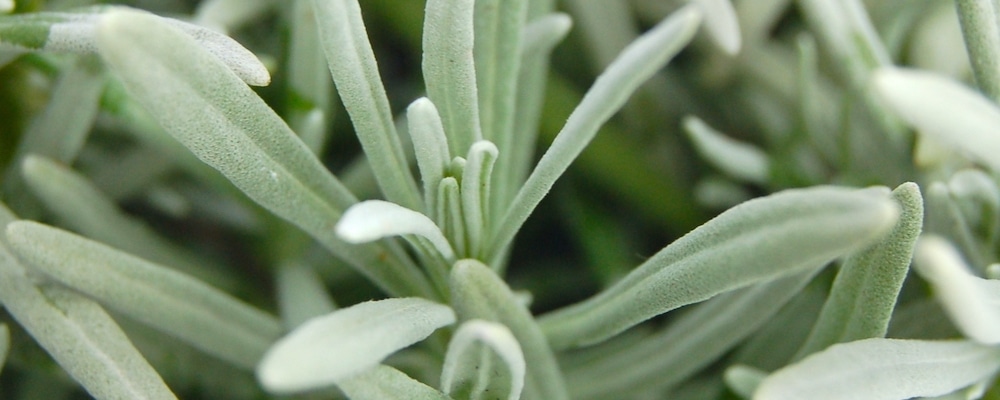
It’s almost impossible to think of lavender and not think of Provence where fields of lavender can be found in a profusion of purple planted in rows that stretch towards the horizon and fill the air with the heavy, rich scent from the lavender oils warmed by the sun.
It’s a plant that rewards you running your hands through the outstretched stems by releasing its fragrance from its natural oils.
Placed next to paths, seating areas, doorways or windows you will be able to savour its beauty and scent as well as benefitting from it being a natural deterrent for mosquitoes.
To keep lavender looking at its best, we recommend you do the following:
- Deadhead the flowers that have gone brown and dried by cutting back the flower stalk to the first set of green leaves
- Once the plant has finished flowering, prune it by cutting back all the stems to the top of the green leaf growth. If you want to shape the plant into a more compact mound, you can cut the stems down further but avoid cutting into the woody part of the stems as lavenders will not regrow from these hard, woody sections.
- Once Summer is over and before winter frosts, move the plant to a less exposed location, where it can still get light but is protected from frosts and cold downpours
For more advice on the different types of lavender and detailed care tips, the Royal Horticultural Society (RHS) is a good source of information: https://www.rhs.org.uk/plants/popular/lavender/growing-guide
Rosemary (rosmarinus officinalis)

Such a brilliant and versatile plant with so many uses, rosemary is one of our favourite herbs. As well as being excellent in recipes, you can garnish drinks with it, use it as a basting brush for barbeque marinades, tie it up and dry it for use throughout winter, infuse oils and vinegars with it, the possibilities are endless.
Rosemary requires very similar growing conditions and treatment to lavender. Cutting back after flowering can help it become bushier and less woody and fragile. Again, be careful to not cut back into existing woody stems as it will not regrow from those cuts. Harvesting rosemary stalks regularly during the Summer will encourage the plant to grow more new fresh growth that is packed with aromatic oils.
Rosemary plants can become quite large, so you may need to repot the plant every couple of years after it’s got fully established.
In winter, make sure the rosemary is kept on the drier side so that frost doesn’t freeze the water in the soil and damage the roots and move it to a sheltered spot where it won’t be subjected to cold winds and winter downpours.
Sage (salvia officinalis)
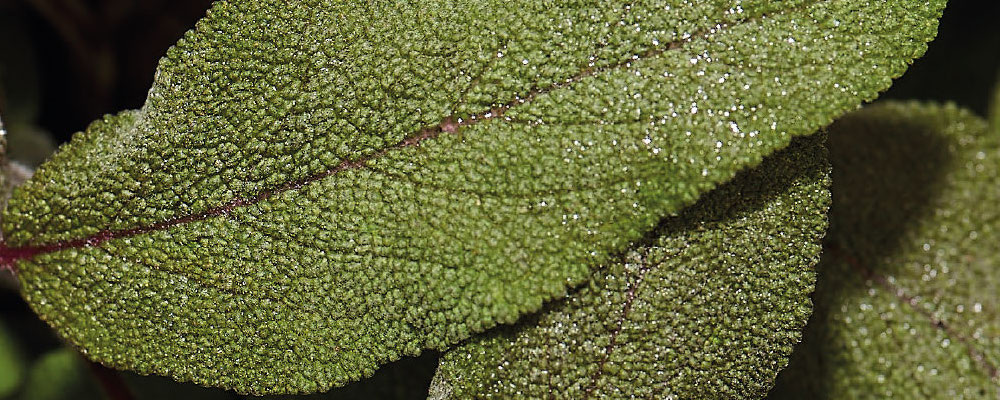
Sage is so beautiful, it is often grown just for its ornamental impact. Not just green, but available in purples, variegated colours included yellows and whites, sage is a true Mediterranean stalwart that no herb garden should be without.
Whilst sage and onion stuffing is ubiquitous with this herb, it’s deep flavour and volatile oils lend it to so many applications in the kitchen: as an infusion for tea, combined with butternut squash in soups and risottos, infusing oils and vinegars or scattered as whole leaves on pizzas and focaccia bread. It is also delicious steamed with white fish and used as part of a bouquet garni for making stocks and stews.
Harvest the leaves as you would harvest rosemary, avoiding cutting into the woody stems. Regular harvesting will help sage keep a bushier shape and not become leggy.
As with all the Mediterranean herbs, this plant loves full sun. It will also benefit from regular watering, light occasional feeding throughout Summer (every 4-6 weeks) and protection from being waterlogged and frost damaged during winter.
For more information on how to grow sage and create new sage plants from your existing plant, Gardeners World has some great advice here: https://www.gardenersworld.com/how-to/grow-plants/how-to-grow-sage/
Oregano (origanum vulgare)

Probably best known for being dried and sprinkled on top of a pizza, oregano is a wonderfully versatile herb that will bring you a hint of Italy in your dishes, from lasagne, pasta sauces, pizzas and roasts, the depth of flavour from oregano more than justifies the need to have it in your herb garden. If, however, you are a real gastronomic wizard in the kitchen, marjoram might well be your go-to herb instead of oregano. The two herbs are different, and we really think it’s worth growing both to fully appreciate them.
In terms of caring for oregano, it’s an easy, low maintenance plant. We recommend the following:
- Snip off stems regularly as you need them, sprinkle the beautiful flowers over your dishes at serving time, and occasionally give the whole plant a haircut to encourage new growth. If you only do this once a year, then do it in July to August.
- Oregano will die back completely over winter and start shooting new growth in Spring, try to keep it on the dry side regarding watering throughout the year and move to a sheltered location in winter where it will be protected from frost and not battered by cold downpours.
- Repot every couple of years with fresh compost and keep it in a sunny spot, watered but never waterlogged and it will reward you every year.
Marjoram (origanum majorana)

A gourmet chef’s delight, marjoram is the more aromatic cousin to oregano and the leaves are typically used fresh and added to Italian, Greek and Spanish recipes to impart their beautifully aromatic and slightly citrus oils, providing depth of flavour as well as a lemony freshness. Marjoram is great for infusing oils and vinegars; consider combining it with rosemary and even some dried chillies to create an oil dressing for pizzas and pastas.
Marjoram care is the same as for oregano. It likes full sun and to be watered sparingly. You can cut the stems you want to harvest right down to the base. Marjoram is at its most flavourful just before flowering, however the flowers do make a lovely garnish if sprinkled over a dish. Once flowering is finished, give it a haircut to promote new growth.
Overwinter marjoram in a sheltered spot that protects it from frosts and winter wet weather but where it can still get light. If you want to bring it inside, it will be happy near a south facing window indoors during winter.
Thyme (thymus vulgaris)

Such a happy and humble herb, loved by pollinators, perfect for pots, gravel gardens, edges of paths and windowsills alike, you can never have enough thyme. It loves well drained soil and full sun and can have an upright or creeping or hanging growth habit. It’s beautifully dainty small leaves and wonderful miniature flowers provide a real charm in any outdoor space as well as being very useful ground cover that suppresses weeds.
We are spoilt for choice with the varieties of thyme available, different coloured leaves, flowers and even aromas: lemon thyme is particularly lovely with fish and chicken or as a botanical garnish to your favourite gin. Thyme is wonderful as an addition to roast vegetables, roast chicken, pies, soups, oils and vinegars. It compliments other Mediterranean herbs, such as rosemary, sage and marjoram and is often added to a bouquet garni for making casseroles, stews and homemade stocks.
If planted in the ground, once established, thyme takes care of itself and you’ll rarely need to water it. If grown in a pot, weekly watering with a liquid feed throughout Summer will keep it in peak health. Pick or cut the stems you wish to use and as give it a good haircut when it’s finished flowering.
The other wonderful characteristic of thyme is that it is evergreen, and many are frost hardy. It can continue to be harvested all year round, albeit that its flavour is at its peak during hot Summer months.
As with all Mediterranean herbs, thyme needs good drainage and won’t enjoy being sat in cold, waterlogged soil during winter, so make sure you place it somewhere where it won’t get drowned by British downpours.
Lemon verbena (aloysia citrodora)

An extraordinary combination of sherbet and lemon zest has led to lemon verbena becoming a well-loved garden herb used in infusions (just add a little honey and it’s a wonderful herbal drink) and as a garnish alongside desserts and fish dishes.
The leaves can be easily dried and stored for a taste of Summer during winter in a warming infusion or fresh leaves are perfect for picking and using during Summer for a refreshing and cooling iced tea.
Lemon verbena is a tender perennial, meaning it will grow year on year as long as it’s protected from frosts and requires a sheltered position in full sun or partial shade in soil with good drainage. In the winter, the leaves may fall from the plant, whilst it becomes dormant. In the Spring, when new growth appears, you can prune the stems to shape the verbena and encourage a bushier plant.
Fennel (foeniculum vulgare)
Not to be confused with Florence fennel (the bulbs of which can be harvested and cooked), herb fennel is a plant that gives you the most delicate fronds of airy leaves and umbel flowers that, if left to dry on the stem, will provide delicious fennel seeds for use in cooking or to grow more herb fennel!
Herb fennel aids digestion and the leaves and seeds can be used as an infusion to drink after a meal. Fennel is a superb accompaniment to fish, salads and the leaves and seeds can be added to homemade pickling brine to provide a hint of aniseed to pickled onions and cucumbers.
Herb fennel can grow very tall if planted in the ground (up to 5 feet) and is an attractive plant in a border due to its feathery leaves that sway in the breeze and the delicate yellow flowers that pollinators love. It prefers full sun and soil that drains well. Once established, fennel is a low maintenance plant that won’t require much watering (it is drought tolerant) and it’s hardy so will grow back year on year.
Herb fennel may require tidying up at the end of the growing season and going into winter, so you can cut the dying stems back, or leave them for insects that want to seek protection in the hollow stems. If you leave some of the flower heads on the plant over winter, not only do these look spectacular when covered with frost, but they can provide very welcome seeds for birds and small animals. Please do be aware that herb fennel can self-seed and you could well end up with lots of baby herb fennel plants sprouting around your existing fennel in Spring.
Mediterranean annual herbs
Basil (ocimum basilicum)
There is nothing quite like the smell and taste of basil. Scattered over fresh, sweet tomatoes or made into a pesto and mixed with fusilli or penne, it’s the ultimate taste of Summer and undeniably the herb of choice if you want to add the taste of Italy to your cooking.
Basil needs the combination of water, heat and sun to really thrive. When watering basil, try to avoid getting water on the leaves and water early in the morning so that there is less chance of the plant becoming too humid and developing problems with powdery mould. Avoid making the compost permanently soggy. If in doubt, push your finger a couple of centimetres into the top of the soil. If it’s dry, water. If still wet, leave it and recheck in a couple of days.
If your basil really takes off and you are growing it in a container, consider dividing the plants into separate pots to allow them to fill out and become more vigorous and bushier.
Feeding basil during the Summer every 4 weeks or so with a liquid fertiliser will encourage new growth and basil flowers, which the bees will absolutely love and the flowers are the very essence of basil flavour.
To harvest basil, you can simply pinch the top growth from the stem, just above a leaf joint (where the leaves grow out from the stem) or cut the stem down to leave three to four pairs of leaves remaining. By doing this, you will be picking the freshest, youngest leaves and encouraging new growth and side shoots which will make the plant bushier and more abundant.
Basil is typically treated as an annual plant because it’s not hardy and often struggles in British winters. At the end of Summer, you can harvest your remaining basil and make basil ice cubes that can be frozen and stored for use during winter. Frozen basil leaves can be used to make pesto really easily and the leaves don’t require defrosting (they will go slimy if you do this), just bung them straight in with your other pesto ingredients, blitz and add to your favourite pasta.
Dill (anethum graveolens)
Easily confused with herb fennel, dill looks similar in that it has feathery leaves and yellow flowers, but it requires a bit more care compared to fennel and is often treated as an annual plant that will naturally die as autumn turns to winter. The taste of dill is more delicate to fennel and it’s wonderful with smoked salmon and fish in general, as well as scattered on salads and is frequently used in Indian recipes.
Dill is a hungry and thirsty herb, so the key is to give it full sun and keep the soil damp. Avoid letting the soil dry out as this will trigger the dill to bolt, which means it will develop flowers, to produce seed and then die back. Feed with a liquid fertiliser every week during Summer and pick off the flowers (they are very tasty scattered over salads or as a garnish on fish) to prolong it’s growing period.
If you wish to gather dill seeds to sow the following Spring, you can cut the flowers once they have faded and dried and then shake the flower heads over kitchen roll to catch the seeds that fall. Store the seeds in a paper bag or envelope and store somewhere cool, dark and dry over winter.
One final tip: avoid growing herb fennel and dill close by to each other. They can cross pollinate, to the detriment of both plants in that the seeds they produce will not be true to the parent plant and not as flavourful.
Perennial herbs
Bay (laurus nobilis)
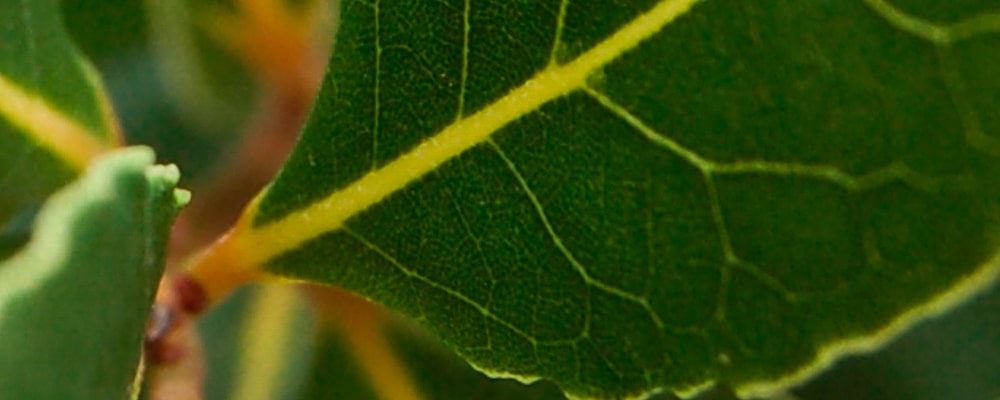
Bay is so much more than a herb. These evergreen plants can grow into trees, can be pruned as sizeable shrubs, topiary and hedging and are often trained as standards to welcome you stylishly through front doors and gates.
Bay leaves have been harvested for culinary use for centuries. They are a staple addition to casseroles, stews, homemade stocks and soups. They can be used fresh or dried in bunches hanging upside down and then stored in a cool kitchen or larder, in an airtight container.
Bay leaves also provide a fantastic foil for Christmas table decorations, door wreaths and flower arrangements.
Caring for this versatile plant is easy, you just need to take a bit more care when the plant is young, but once established, they will romp away.
Bay can be grown in full sun and partial shade, the most important element is watering and feeding when the bay is young. Avoid the compost from drying out and feed weekly to promote strong and healthy new growth.
In the winter time, make sure the bay doesn’t get waterlogged or exposed to heavy frosts. If you plant the bay in a very large container or in the ground, then once it is a few years old, it should be able to fend for itself during winters. If it’s in a pot or container, always make sure the container is on feet to lift it off the ground and that there is a drainage hole and good drainage (gravel or grit) in the container to enable excess water to drain.
If you want to shape your bay, use clean, disinfected shears and prune it in Summer. In larger bay hedges or trees, check for nesting birds before pruning and delay it until the end of Summer or early autumn if you see evidence of nests.
Mint (mentha)
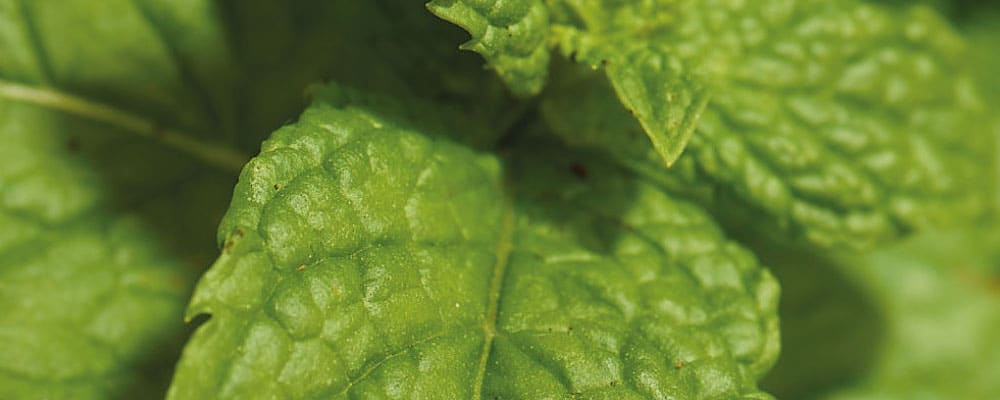
Mint teas, mint in your Summer cocktails, mint in potato salads, mint sauce with roast lamb. Where would we be without mint? There are many different types of mint: spearmint, peppermint, apple mint, ginger mint, chocolate mint, we are spoilt for choice.
During the Summer, mint will require frequent watering to make sure it doesn’t dry out. Feeding with a liquid feed every couple of weeks will also help it stay green and healthy. At the end of the Summer, cut the mint back to about 4 centimetres above the soil. Repot or divide up into multiple plants and pot on in containers to prevent the plants from getting weak or developing bald batches where not much new growth is produced.
Mint is a robust and pretty bombproof perennial herb. In fact, it will take over the world if you let it. Mint tends to fill the container it’s in and when it’s done filling that, it will escape through drainage holes and over the rim of the pot into neighbouring containers. This is why, at Muddy Trowel, we have nicknamed it the mint monster but we wouldn’t be without it.
Thankfully, it’s easy to keep it in check:
- Keep it in a pot as you’ll be digging up mint from your garden borders forever if you plant it in the ground. Divide and repot often, as mint roots can fill the entire pot in one year and run out of nutrients and start to look tired. The leaves will become sparse and small, indicating that it needs to be taken in hand.
- Be brutal, this is a vigorous plant, you can divide the root ball with a knife, discard sections where there aren’t many stems or growth and pot on the divided sections to grow yourself a minty jungle.
- Make more mint to overwinter. Mint can look a bit straggly in winter, so you can cut a bunch of stems with leaves on, remove the leaves from the lower section of the stem and put them in a glass of water on a window sill and they will develop roots. Change the water if it starts looking cloudy or manky. Once plenty of roots have appeared you can pot them into small pots of soil and you have new mint plants for next year that are a more manageable size with fresh new growth.
- Harvesting often keeps it in check. Warm yourself up with a mint infusion before bedtime, it’s great for digestion and keeping you hydrated at night time. To harvest mint, you should cut a length of a leafy stalk down to above a leaf junction (where a pair of leaves grow).
Lemon balm (melissa officinalis)
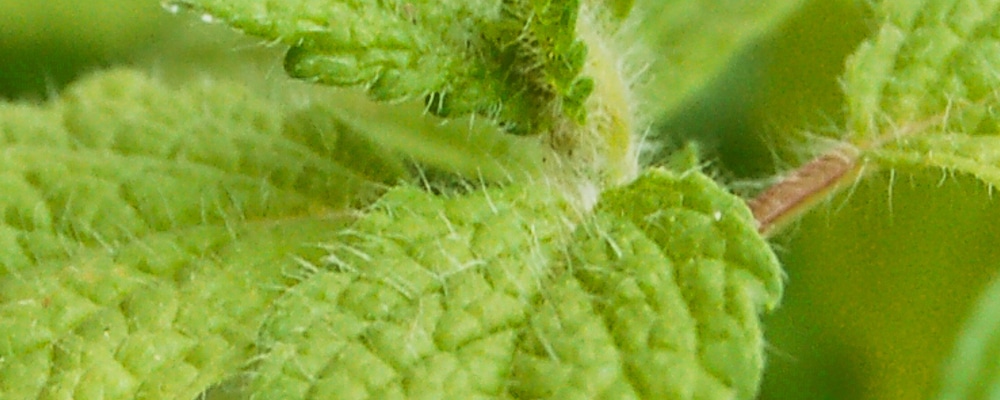
Lemon balm looks like mint at first glance but pinch a leaf between your fingers and the aroma is citrusy, floral and thoroughly uplifting; perfect for an infusion or sprinkling over fish, adding to vinaigrettes and garnishing salads.
Lemon balm is a vigorous perennial plant that requires regular watering during hot Summers and feeding every couple of weeks. It’s happy in full sun and partial shade and like mint, can fill the container it’s in, so don’t be afraid to pull the plant out of its current container, divide up the root ball, either by pulling it apart with your hands or using a knife and potting the smaller clumps into separate containers. Like mint as well, lemon balm can start to try and take over, so growing it in containers is a good way to keep it under control.
If the plant flowers, cut it back after flowering to encourage fresh growth and a bushier plant.
During winter, move the plant to a sheltered spot where it’s not subjected to cold downpours and make sure the container doesn’t become waterlogged. Raising the container up off the ground onto feet or bricks or tiles so the water can drain freely from the drainage hole helps prevent this.
Chives (allium schoenoprasum)

If you find onions and spring onions a bit too fiery or overpowering for your salads, chives are the answer with a delicate onion flavour that compliments eggs, fish, chicken and salads. For the real carnivores out there, a simple combination of chives with butter and garlic can take a fillet steak to the next level.
Chives are perfect for container gardening as they do tend to spread if planted in borders and so by giving them boundaries, you can keep on harvesting this brilliant herb throughout Summer, just use a pair of scissors to snip a handful of the stems near the base.
The two things you need to take care of is keeping them watered during hot Summers and dividing them into smaller clumps once they get a bit congested (you can do this anytime from late Spring to end of Summer). If you lift your chives out of their current pot, you’ll see they sprout from little white bulbs. Pull a handful of bulbs apart from the others and repot these in a separate container with compost.
Chive flowers are beautiful and loved by pollinators. They are also edible, so feel free to use them as a garnish or sprinkle them over salads.
At the end of the Summer, chives will die back, and the stems will go yellow and droop. Let them die back completely before tidying the stems away and in the Spring, they will bounce back into life.
Tarragon (artemisia dracunculus ‘sativa’)
French tarragon is a wonderfully peppery and aniseed flavoured herb, probably best known for use in Béarnaise sauce but equally used to flavour vinegars, pickles, fish and chicken dishes.
It requires well drained soil and lots of sun to thrive well. Like many of the Mediterrean herbs, it won’t like being overwatered or sitting in waterlogged soil when it’s cold, so make sure you place it somewhere sheltered during winter.
Harvesting couldn’t be easier, just snip the new shoots as you need them and this will encourage fresh regrowth. If you find after a a couple of years that the plant is starting to look tired, you can carefully dig it up and divide the root ball into two or three sections and grow these separately to multiply the number of tarragon plants you have over time.
Annual herbs
Parsley (petroselinum crispum)

Curly leaf parsley seems to have been synonymous with a garnish on a plate that was a bit sad and often overlooked in days gone by. However, the popularity of flat leaf parsley has led to a revival of parsley in general. Flat leaf parsley can be considered to be the more flavourful variety, but both are unmistakably closely related to celery and have a similar flavour profile, but with a sweeter, less bitter taste.
Parsley is an incredibly useful herb to provide a depth of flavour to casseroles, stocks and stews. It balances perfectly with garlic and butter as demonstrated by its use in chicken kiev recipes, as an addition to new potatoes and as the sauce used in the infamous French preparation of escargots (snails).
In terms of caring for parsley, all it really requires is regular watering during Summer and feeding every couple of weeks with liquid fertiliser to keep on producing delicious leaves. You don’t really want your parsley to flower as then it will think it has produced its seed, done its job and it’ll stop growing fresh growth, so nip off the flower heads as soon as they emerge.
At the end of the Summer the parsley will naturally die back as it’s treated as annual in the UK, so you can do a few final harvests before this and dry or freeze the parsley leaves for later use.
Coriander (coriandrum sativum)
Coriander divides opinion like no other herb. Many shun it and declare it soapy and bitter, but not us! At Muddy Trowel we adore it’s fragrant, zingy and slightly citrusy flavour. We love it mixed into dips like salsa and guacamole, sprinkled on Indian and Mexican dishes, finely chopped and added to falafel mixture. The combination of coriander, lime and chilies is outdoor Summer street food personified.
The main thing with coriander, which is grown as an annual in the UK, is to grow it in full sun, but to not let the compost dry out during Summer. If it does dry out, coriander will bolt and produce flowers and seeds and the plant will promptly die back, so to maintain a healthy crop that you can harvest regularly, keep coriander watered (but not waterlogged), pick stems regularly but leave several pairs of leaves on the base of the stem and nip off flower heads as soon as you see them (the flowers are delicious and can be eaten).
At the end of the Summer, you can either:
- Allow the coriander to flower and produce seeds, that you can collect and either use in recipes or save for sowing the following Spring or
- Do a few final harvests before it dies back and dry or freeze the coriander leaves for later use
Borage (borago officinalis)
The sapphire blue star flowers of borage are the jewel of this plant and reason enough to have it in your herb selection. Borage plants hum with pollinators in the Summer, the flowers attract bumblebee after bumblebee to its delicious nectar. The flowers are edible and have a cucumber flavour and so have become popular as a garnish for Summer cocktails, mixers and salads. Cakes decorated with borage flowers look extraordinary.
Borage is an annual plant but readily self-seeds around a garden if you let it. The very young leaves of borage can be used in salads and impart the same cucumber flavour as the flowers. However, the larger, more mature borage leaves and stems are hairy and can cause skin irritaion, so avoid hugging or caressing your borage plant too eagerly.
Borage thrives in a sunny spot and because of its large tap root, needs a large container, if kept in a pot. It won’t need any feeding but will require watering during prolonged dry spells. It needs soil that drains well and isn’t prone to waterlogging.
Pick off spent flowerheads to encourage more flowers and at the same time marvel at the amazing transformation in flower colour from sky blue to purple and dainty pink when you add them to your Summer drink. This is a plant that will keep on rewarding you right up until the first frosts, so we think it is a worthy addition to any garden and a must have for any budding mixologists out there.
Chamomile (chamaemelum nobile)
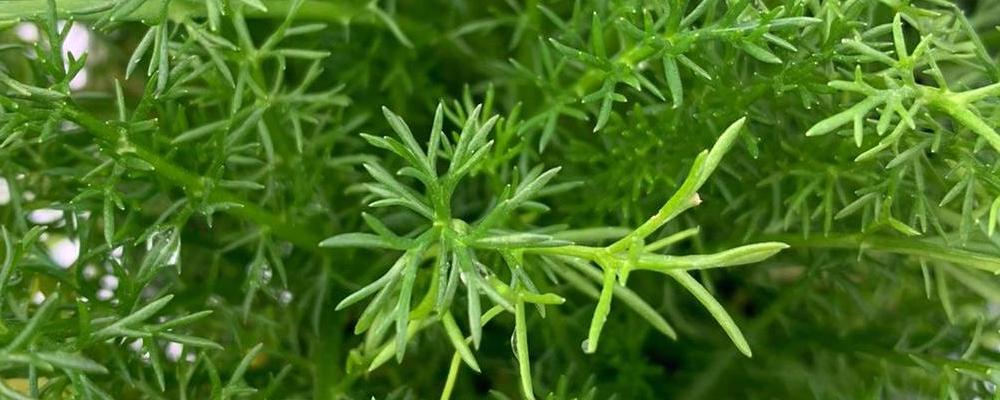
Chamomile tea has long been extoled for relaxation and as a de-stress at the end of a day, easing you into a restful night’s sleep. To make an infusion, chamomile flowers can be picked and dried and steeped in boiling water. Chamomile is low growing and clump forming and can also be used entirely ornamentally, its feathery leaves urge you to brush your hands through it and in turn it releases a beautiful aromatic scent.
Caring for chamomile is relatively low maintenance, the key is to make sure the soil is kept moist through Spring and Summer, although it needs to be in a free draining soil in full sun. Deadhead spent flower heads to encourage flowering and trim stems to shape it and keep it compact.